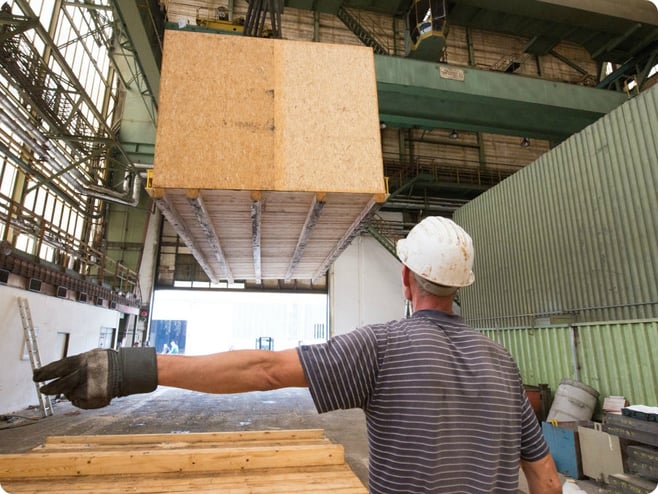Out of the dozens, or possibly hundreds, of vendors you work with, you probably have a handful that rank as your favorites. You know who they are. They’re the ones that provide that unique part or material that helps you keep your biggest customer happy. Or they’re the ones who always get you large volume orders on time so you can meet a customer’s tight deadline.
Your favorite suppliers are the ones who meet and exceed the terms of your partnership. They deliver quality products and materials on time. They bend over backward to help you meet difficult challenges. And they’re invested in your success, so they’re willing to be flexible when you need assistance.
Every industrial and manufacturing company dreams of cloning their handful of top suppliers. If only every supplier showed the same commitment to your business and your success, right?
However, even the best suppliers aren’t without their flaws. You can probably identify one or two things with even your top vendor that you would change if you could. One of those items may be packaging.
At Deufol, we’ve helped many industrial companies optimize their supply chain, so we’ve seen this challenge play out many times. A company has a supplier who is vital to the business’s success. The only problem is that the supplier’s inefficient packaging process is costing the manufacturer time, labor, and money.
What’s the answer? Surely you can’t tell your supplier to change their packaging, right? Actually, you possibly can, depending on the relationship. However, a better approach may be to find a solution that benefits both of you. When you work from an attitude of collaboration, you can improve and strengthen the relationship, as well as boost profitability for both parties.
Below are a few ways your suppliers’ packaging challenges could be impacting your business, along with some strategies for resolving the issue. If these sound familiar, it may be time to take action.
Vendors design packaging to meet their needs, not yours.
One of the biggest problems with supplier packaging involves the actual package itself. At many suppliers, packaging is an afterthought. The supplier wants to protect quality, but beyond that, their primary concern is often to keep their costs low. They design packaging for their needs, not yours.
The result is that the supplier may be investing more resources into packaging than necessary. They may be buying costly packaging materials or they may have too much labor tied up in packaging. That leads to inflated costs on your end.
Additionally, on the receiving end, you might have to deal with that inefficient packaging. Your workers spend too much time sifting through packaging materials and hauling those materials to the dumpster. Again, that’s excessive cost that shouldn’t be necessary.
The solution is to ask your supplier to review their packaging in a collaborative way. Perhaps you could partner with a packaging company to design rotable, or reusable, packaging that requires little protective dunnage. That reduces material costs and labor time. Your supplier could split the savings with you by lowering your prices.
Alternatively, perhaps your supplier could implement a semi-automated packaging process that reduces labor time. Again, you and your supplier could team up with a customer industrial packaging company to design and implement the process and then share the savings.
Disjointed logistics lead to quality issues and inflated costs.
In some cases, you and your supplier may have different standards of quality protection. In a perfect world, all suppliers would alter their processes to meet your standards. In the real world though, that doesn’t always happen.
If you have a number of suppliers located in one country or region, you may want to implement a packaging hub. In this model, those suppliers use minimal packaging to send their shipments to your designated host facility in the area. Because it’s a short distance, less protective packaging is needed.
Logistical Savings:
All parts come directly from your hub rather than on multiple shipments from several different suppliers.
Then, in that facility, your team can unpack containers from all vendors, bundle them together, and repack them according to your standards. The packages are then shipped directly to your production facility.
The benefit of this model is that it ensures that all supplier packages meet your standards. However, there are other advantages. Since your suppliers are using less packaging on their end, they should pass some of those cost savings onto you. There also may be logistical savings since all parts come directly from your hub rather than on multiple shipments from several different suppliers.
Lack of technology investment restricts transparency into your supply chain.
As much as you may love a certain supplier, you may also hate that you have no idea where your parts are in their packaging and distribution process. This is especially common when working with some international suppliers. You can’t track their packages, and because of language or time zone differences, it’s difficult to connect with them for an update.
Technology can be an effective solution for this problem. You could install barcode scanning technology at the supplier’s facility or in your hub. As products are packaged and loaded onto trucks, the barcodes are scanned. That information is integrated with your software so you can get updates with a few clicks of the mouse.
GPS technology is another helpful solution. Many GPS tools can not only provide location information, but also data about temperature, moisture levels, vibration, air pressure, and more. In fact, a GPS could even tell you if your package was opened in customs because of the change in air pressure in the container.
Has your supplier invested in these types of technological solutions? If not, perhaps you and them could work together to implement these kinds of strategies. You get the quality assurance and transparency you want and you both are able to share in reduced packaging costs.
If you have a substantial and lucrative relationship with a vendor, don’t let certain issues go unaddressed. Their challenges are your challenges. By partnering together and working with an industrial packaging consultant, you can both find ways to improve quality, cut costs, and boost profits. ![]()






Let Us Know What You Thought about this Post.
Put your Comment Below.